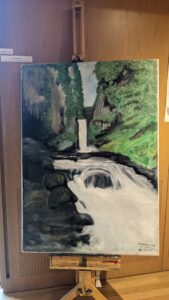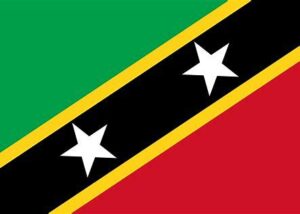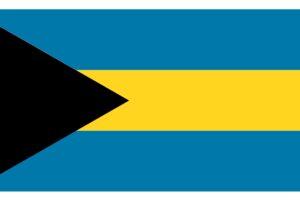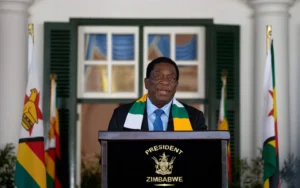
Photo credit: : Liberty Brignall
A Review of ‘Voices from Death Row: Art as a form of Expression’
- News
- 12 May 2023
The Death Penalty Project supported art exhibition, ‘Voices on Death Row: Art as a Form of Expression‘ held at the University of Oxford in May.
This article was originally published in The Oxford Blue by Liberty Brignall , 7 May 2023.
Content warning: death
What does it mean to create something from nothing? This is the question I was left with after I attended the opening night of Voices from Death Row: Art as a form of Expression, on 6 May. The result of Lucrezia Rizzelli and Amelia Inglis’s tireless work, the exhibition, in the organisers’ own words, “[attests] to the therapeutic and expressive power of art”. Held in the Oakeshott Room at Lincoln College, Voices from Death Row runs until 8 May and is open from 10am to 7pm each day. All the pieces on display were created by artists on death row and international artists, from the USA, to Kenya, to Indonesia.
Amidst paintings of a cat and Tina Turner, a couple of infographics, produced by Rizzelli, adorned the walls. This sets the tone for the exhibition – the artworks we appreciated as we drank our wine and prosecco cannot be divorced from the contexts in which they were produced. Nevertheless, I was struck by the variety of pieces on display. Ndume Olatushani’s large yellow collage of newspaper reports is overwritten in red paint with the phrase “ABOLITION NOW”. Other works made little to no direct reference to the artists’ circumstances. The first painting that greeted us as we walked in, for example, was of Siamese fighting fish. In the opposite corner of the room, a slideshow played – a series of photographs of inmates’ final meals.

After an initial viewing of the pieces, as well as accompanying descriptions of and testimonies from the artists, we moved into an adjacent room for the talks. Carolyn Hoyle, Professor of Criminology at the University of Oxford and director of the Death Penalty Research Unit, opened the talk by briefly outlining the work she and her team carry out in order to bring about the abolition of capital punishment through scholarship. Parvais Jabbar, co-founder and co-executive director of The Death Penalty Project, followed, discussing the legal representation of prisoners on death row. He highlighted the need to humanise the inhumanity of the death penalty. No verb more fittingly summarises the aims of the exhibition.
The next speaker was Peter Ouko, who spent years on death row after being wrongly incarcerated. He too spoke of the need to humanise death row and its inmates, in light of the dehumanising experiences he faced. This is where art comes in. Ouko began an art club in prison. It was there, rather than at school, that he studied art. He explained that his creativity offered him the opportunity to build a new narrative, to create something out of nothing. More than art, it seemed that he created himself from his time on death row. He was the first inmate in his prison to study law, and subsequently, he founded Crime Si Poa, an initiative promoting a crime-free society, specifically targeted at young people.

A video from Ndume Olatushani, one of the featured artists, was played. Also falsely incarcerated, Ndume detailed how he discovered art while on death row after meeting an artist in prison. He offered a passionate testimony for the power of art. In his own words, it was art that saved his life. Both in the video and in the written description beside his art, he explained how he used colour as a form of resistance, to counteract the colourless environment from which he was physically unable to escape. I was struck by his suggestion that we are all artists, because being an artist means being able to imagine.
Toshi Kazama concluded with a PowerPoint of images from his years photographing prisons and inmates on death row. It is difficult to write about Kazama’s talk, not least because of the heaviness of the subject matter. As he explained, it is one thing to know about death row, it is another to experience it. Through his photography, it felt as though everyone in the room was sharing the experience, or at least as closely as possible without physically inhabiting those spaces.
It’s easy to be disparaging about art, to dismiss it as frivolous or trivial in the grand scheme of things. Only a few years ago, advertisements encouraging ballet dancers to retrain and take up a job in cyber security were all over social media. And yet, the exhibition could not have made a more powerful argument for the importance of art. To create something out of nothing is an act of liberation. It allows us to imagine and realise new possibilities for how the world could be.

















